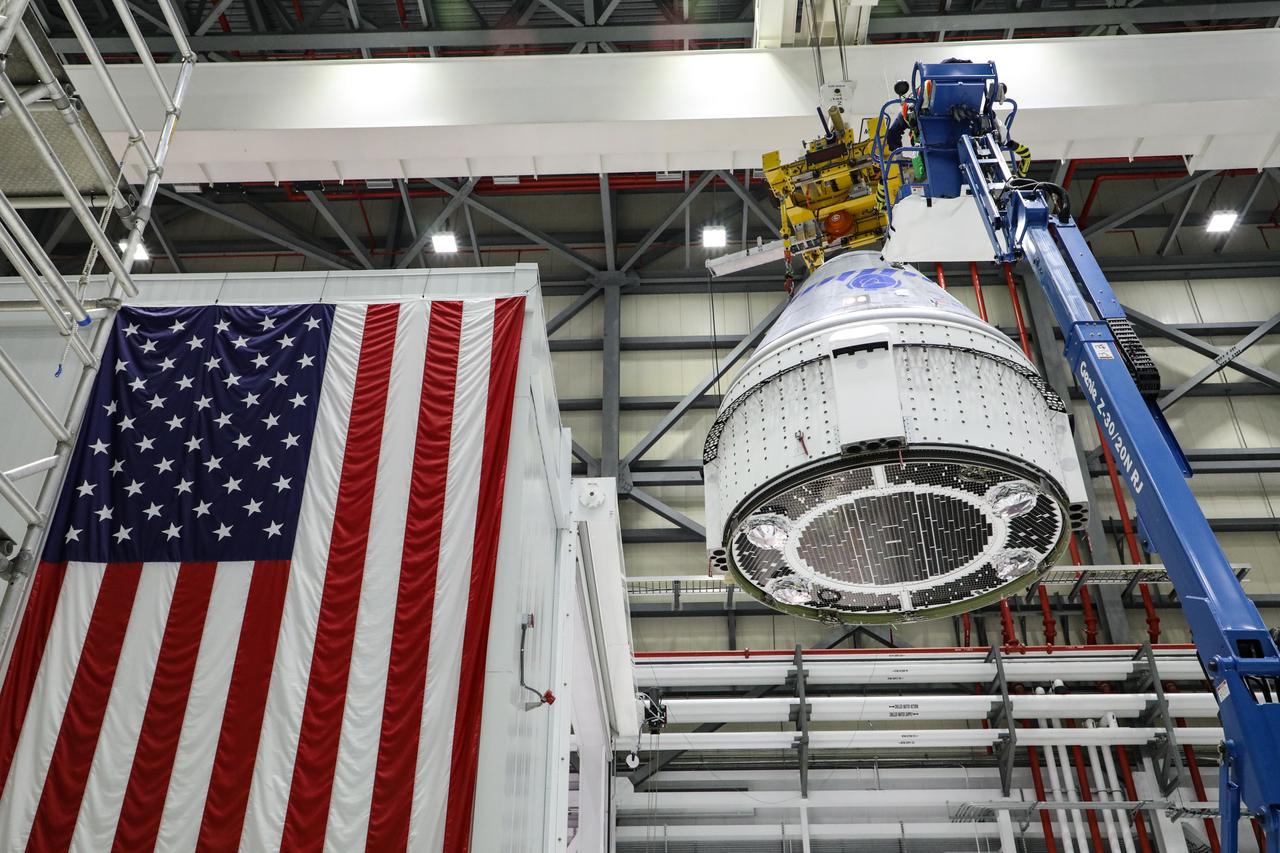STORY WRITTEN FOR CBS NEWS & USED WITH PERMISSION

Engineers are zeroing in on the “root cause” of a disappointing August launch scrub that grounded Boeing’s Starliner astronaut ferry ship: humidity-triggered corrosion in key propulsion system valves, company managers said Tuesday.
Corrective measures are being developed while troubleshooting continues, but another attempt to launch the Starliner on an unpiloted test flight to the International Space Station is not expected until well into next year, likely delaying the first piloted mission to even later.
In the meantime, NASA will continue relying on SpaceX and its operational Crew Dragon capsules to send astronauts to and from the station with the next flight scheduled for launch on Halloween. The next Crew Dragon flight after that is planned for mid April.
John Vollmer, manager of Boeing’s commercial crew program, said the company’s prime of objective with the Starliner is to fly safely, “and I stress safely,” as soon as possible.”
“Everything we’ve done up to this point, and the path that we’re developing going forward, is going to enable us to meet that goal of getting back to flight safely,” he said. “We looked at the options of how to go forward and … it’s putting us somewhere in the first half of 2022.”
As for the cost, Vollmer said “there are no additional charges that will be going to the government for this. This is something the Boeing Company will make sure that we’ve got covered as we get this vehicle prepared. We are 100 percent committed to fulfilling our contract with the government, and we and we intend to do that.”
In 2014, SpaceX won a $2.6 billion NASA contract to develop its Crew Dragon spacecraft while Boeing was awarded $4.2 billion to develop the Starliner. The spacecraft were intended to end NASA’s post-shuttle reliance on Russia’s Soyuz and return human space launch to U.S. soil.
Boeing originally planned two Starliner test flights, one unpiloted and one carrying a crew. Both were intended to rendezvous and dock with the International Space Station.
The initial uncrewed “Orbital Flight Test 1,” or OFT-1, spacecraft was launched Dec. 20, 2019, but the flight was marred by a serious software error and communications glitches that blocked the planned space station rendezvous. Another error could have caused a catastrophic failure had it not been caught before re-entry.
After an extensive investigation, the software and communications issues were corrected, a host of other upgrades and improvements were implemented, and Boeing scheduled a second unpiloted test flight, at the company’s expense, for Aug. 3.
But during a routine pre-launch test of the propulsion system in the Starliner’s service module, telemetry indicated 13 of 19 valves failed to respond as expected.
The OFT-2 launch was delayed for troubleshooting and while engineers eventually coaxed nine of the 13 to open using higher voltages and heaters to free up the stuck components, four refused to budge. Boeing then opted to haul the capsule back to its processing facility for additional analysis.
Inspections revealed traces of corrosion in the valves, appearing to confirm what engineers suspected early on: moisture, likely the result of summertime Florida humidity, somehow worked its way into the valves where it reacted with nitrogen tetroxide propellant that had seeped across internal Teflon seals. The result was the formation of nitric acid and corrosion.
Propellant seepage across Teflon seals is not unusual and is kept in check by limiting how long the propellant is on board. The Starliner was well within the normal 60-day limit.
But given high humidity, rain and thunderstorms are no surprise in Florida, “everybody asks this question, why didn’t we know this before we went to the pad?” Vollmer said.
“Just to be clear, … we had cycled these valves many, many times in the factory as we installed them, as we checked them out, as we went through the environmental qualification testing. … We had no indication that there was going to be any problem with these valves.”
And there were no signs of trouble during a launch pad abort test, thruster “hot fire” tests and the OFT-1 mission.
“We really didn’t have any indication or reason to believe that we those valves would not cycle,” Vollmer said.
Toxic propellants have now been drained from the service module tanks and two valves have been removed for shipment to NASA’s Marshall Space Flight Center in Alabama for computerized tomography scans, disassembly and more detailed inspections.
Additional tests are planned at a facility in New Mexico where engineers will attempt to duplicate the failure mode using the same environmental conditions present during the actual countdown.
In the meantime, engineers are developing plans to add desiccants to the valves, possible heating elements and a more powerful dry-air pre-launch purge to prevent condensation inside the service module.
